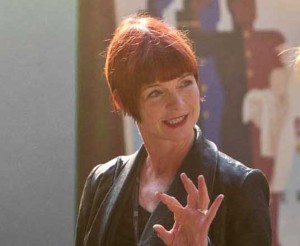
This year’s Academy Award nominees for best costume design are Sandy Powell for Carol and Cinderella, Paco Delgado for The Danish Girl, Jenny Beavan for Mad Max: Fury Road, and Jacqueline West for The Revenant. These films cover a wide variety of genres, making the competition extra interesting this year. Set also in different time periods of history, this selection of films represent the highest achievement of creativity this year. This creativity expressed is what sets these films apart and is worth exploring in depth.
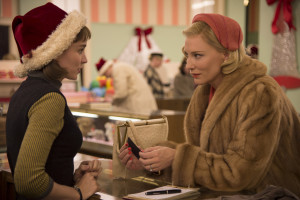
In Todd Haynes‘ Carol, the story of an aspiring photographer’s relationship with an older women in the early 1950s is told as realistically, costume wise, as possible. Powell scoured Vogue and other fashion magazines from the exact time period for inspiration and she created outfits that looked as though they came straight from that time.
There were challenges of course and one was working with the constriction of a very small budget but Powell was no less creative because of it. “It places limitations but it really pushes you to be creative and also be resourceful and edit – only do what’s really important and necessary,” she said. Her team was also stripped down to an essential group – two assistants, a supervisor and a small group of people who fitted and dressed extras. “I think it is one of those occurrences where every single person does the absolute best they can possibly do and it all comes together and is really coherent. It’s a really great collaboration. They don’t always work, and this did.”
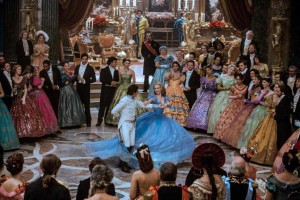
Cinderella is a wealth of glorious costumes and in no scene is this more apparent than in the ballroom scene at the palace. The design process for Powell and her team on this scene was extensive and the results sumptuous, especially with 450 extras all wearing specially designed costumes. “The ballroom scene was inspired by a lot of ballroom dances from old-fashioned films. It’s a mix of different elements from different centuries because we were looking for a diverse mix of characters from various social and economic classes since it was supposed to be a ball for everyone. And we wanted everything to be as colorful as possible. This is a fairy tale, and if we don’t treat it with color then it’s pointless, and that’s what’s been really fun. So the whole ballroom is an explosion of color, sumptuous, rich, and in some cases, really over the top, as many of the guests are there to impress, and hopefully marry, the Prince, and we’ve spent months creating this vast array of colors, looks and styles. We also wanted to have an element of international flavor, so we dressed princesses from China, Japan, India, Africa and Russia,” Powell explained.
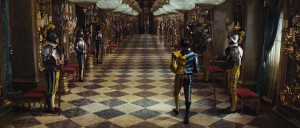 Dressing Cinderella at the ball though was the highlight of the scene and a particular challenge was to fill the scene with extravagant costumes but still have Cinderella stand out from the crowd while keeping her dressed relatively simply. This was a key transformation moment for her so she also had to look vastly wonderful compared to her appearance earlier on in the story. Her dress also needed to perform since she would be dancing and running around. “It was actually months and months in the making: lots of prototypes, lots of fittings and lots of trials with dancing and moving. The gown is very cleverly engineered, so that even though it’s voluminous, it’s actually very well balanced. It’s not even heavy because of where it sits on the body, and the supports underneath the seven petticoats make it incredibly easy to move in. It’s not the most ornate, or the most glittery, or the sparkliest, or the richest looking gown in the ball, but it had to be the most beautiful,” she said.
Dressing Cinderella at the ball though was the highlight of the scene and a particular challenge was to fill the scene with extravagant costumes but still have Cinderella stand out from the crowd while keeping her dressed relatively simply. This was a key transformation moment for her so she also had to look vastly wonderful compared to her appearance earlier on in the story. Her dress also needed to perform since she would be dancing and running around. “It was actually months and months in the making: lots of prototypes, lots of fittings and lots of trials with dancing and moving. The gown is very cleverly engineered, so that even though it’s voluminous, it’s actually very well balanced. It’s not even heavy because of where it sits on the body, and the supports underneath the seven petticoats make it incredibly easy to move in. It’s not the most ornate, or the most glittery, or the sparkliest, or the richest looking gown in the ball, but it had to be the most beautiful,” she said.
It was the details of the dress that made it particularly special. “I wanted to decorate the dress with something, I just didn’t know what, and I liked the idea of using butterflies, so we came up with the idea of having little butterflies land on the dress after the Fairy Godmother has created it, which would then be incorporated into the dress’ decoration. The gown itself is made up of over 270 yards of fabric because there are so many layers to it, more than three miles of stitching, numerous petticoats and more than 10,000 Swarovski crystals, and nine copies were created. We decided very early on that the color should still be blue, as it was in the animated film, but it had to be just the right shade of blue, and that took weeks and weeks to get right,” Powell said.
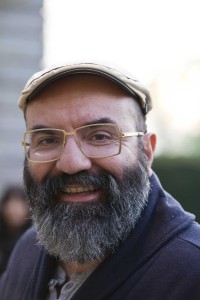
He began his design process by looking into the mechanics of the script and asking questions: who are the characters, what kind of environments do they live in, how does it affect them and how does it affect the clothes? He then studied images from the period. “For this period, photography already existed so you look at the photography and in this instance this was the life of a person who was real and lived in the 1920s and you try to find those photographs,” Delgado explained.
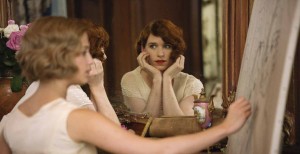
One of the challenges Delgado faced was doing a work that was faithful to the character. The brilliant use of color helped him accomplish this goal. “With everything that happens in Copenhagen, we used blues, greys and blacks and then when they move to Paris it was a more modern, avant-garde and fashion conscious city and we started moving into warmer colors like greens, oranges and reds. For us, it was trying to depict this new freedom, this much more emotionally positive place.”
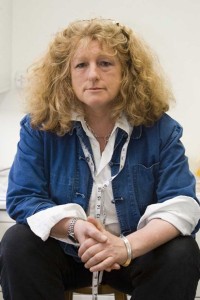
Beaven dived into the world of Mad Max: Fury Road by imagining a world after a major catastrophe and researching everything post apocalyptic. She looked at photos and books and searched the internet for inspiration from real life people, art, fashion and just about everything else that was inspiring for a post apocalyptic world.
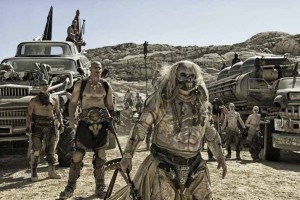
Even so with the challenges, she managed to create looks that were varied and fascinating for each character. She loved the individuality of each character and had many favorites. “I found Rictus Erectus pleased me a lot when all the elements of the costume came together. I think my entire team had a hand in making all his components. I made his dolls head necklace which brought back all my early career as a prop and model maker and the fun I used to have. And I loved the Vuvalini – the older women survivors from the ‘Green Place’ that no longer existed, on their motorbikes that had become their homes. But also the ‘Wives’ who were so totally inappropriately dressed for a road trip as they had been confined in a bubble in the Citadel and needed little clothing,” Beaven said.
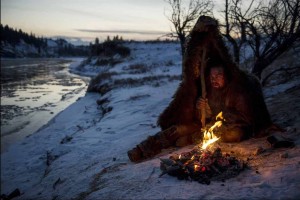
One of her favorite parts to design was creating the looks for the Native Americans. “I love Native American philosophy and their history and the way they approach life and nature and creating very real but different tribes was such a challenge,” West said. The other favorite was DiCaprio’s costumes which portray life in those times so realistically. In fact, they felt so authentic, West forgot all about the costumes when she watched the film. “In that way I felt like I succeeded. I was totally immersed in the movie.”
It was definitely a challenge to make these costumes look so real and to make the trappers look more and more like the animals they were hunting. “These men, in that environment, in those times, once their Eastern clothes disintegrated, they had only a pattern to give to Native American women to copy in leather and furs. I had to keep these men warm the way they kept themselves warm back then. I’m not going to lie to you, I did use some polyurethane underlining to keep them dry so they wouldn’t get frostbite but for the most part they dressed exactly as the men back then dressed,” West explained.
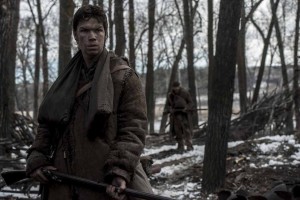 It was a very real experience to make clothing that actually kept the actors warm during the freezing shoot and not have anyone get frostbite or worse. Everyone was committed to Iñárritu’s vision to tell this story of revenge and redemption and West embraced her task to keeping the actors alive during the biting cold. “Everyday it was kind of special, everyday changed because our environment changed. We travel led on this journey with those trappers and it’s quite a crawl. It’s a movie that I feel is an experience of a lifetime,” West said.
It was a very real experience to make clothing that actually kept the actors warm during the freezing shoot and not have anyone get frostbite or worse. Everyone was committed to Iñárritu’s vision to tell this story of revenge and redemption and West embraced her task to keeping the actors alive during the biting cold. “Everyday it was kind of special, everyday changed because our environment changed. We travel led on this journey with those trappers and it’s quite a crawl. It’s a movie that I feel is an experience of a lifetime,” West said.
All of this year’s nominees for costume design have exciting stories to tell of their experiences working on the nominated films. Each film was filled with creative challenges and each nominee was dedicated to telling their story. That’s the beauty of costume design, it helps to show the character’s journey, whether it be in a Western or in a fairy tale, in a different period or in a post apocalyptic world. Costume design is a kind of magic, transforming characters and worlds into the vision of the story that is being told.
Vote in Below the Line‘s Unofficial Awards Poll
[poll id=”67″]





